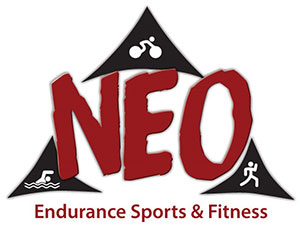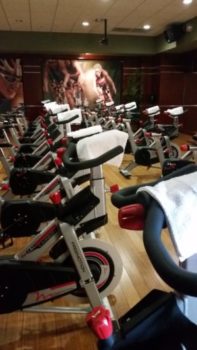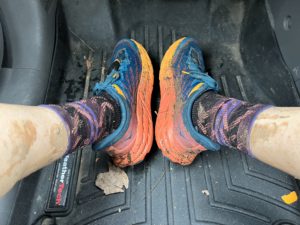One of my clients decided she wanted to tackle a half-marathon (that’s why she hired me) but doesn’t have any experience running. So the first thing we did was head to a local running store to find her the right pair of shoes. Why did I take her there? Answer: A good running store knows feet and shoes, so if you are going to be running, you want the right kind of support for your gait and foot type.
There is a lot of technology in running shoes these days, and you can spend hours reading articles about the best type of shoe for your foot. Case in point: the Runner’s World Shoe Lab. Runners and triathletes certainly should know the basics of shoe fit (understanding your arch type, are you neutral or do you pronate, what type of shoe works typically works best for your foot type), but it can be overwhelming and really quite difficult to pick out a shoe that will fit your foot from a review in a magazine or on the Internet. So that’s why we recommend heading to your local running store.
What service should you expect from your running store, expecially if you are new to running?
- Visual inspection of your current shoe. Wear patterns can provide some indication of your footstrike, but shouldn’t be the only inspection.
- Inspection of your gait with no shoes. The sales person will typically have you walk about 10 steps in one direction and then back. They are looking to see how your foot land without any support. They want to see if your arch stays high or if it collapses at all.
- If you are new to running shoes, the sales person should bring out a neutral cushioned shoe and watch you run. Most stores these days will have a treadmill and a video camera and will capture your stride from behind to determine the amount of pronation you have (if any). If they don’t have a video camera, the sales person will simply watch you run and make mental notes of your foot strike.
- The store I took my client to has a foot scanner that measures weight distribution and shows the footprint to determine arch type. It will also suggest an appropriate shoe size. Pretty cool for the techy types
- Now the sales person should have enough information to determine what kind of shoe (neutral, stability, motion control) you might need and bring out SEVERAL different brands for you to try.
- You should then try on each brand, evaluating it for fit, comfort and proper correction of any pronation issues. The video is useful here – some stores have software that allows side-by-side comparison of shoes.
- You get to make the final choice so remember these tips:
- A running shoe will not need to be “broken in” so if it isn’t comfortable in the store, it won’t be when you run.
- Running stores carry different brands, so you might need to go to a few stores to find the right shoe for you.
- Check the store’s return policy. Sometimes there will be issues and you need to return the shoes. Remember they will have to be in sellable condition so try to keep your first few runs with the new shoes on a treadmill or clean sidewalk only! Once you take them on the trail, they will be yours to keep!
- Is it worth $100-$150 for a good pair of shoes? YES!!!
I personally like to get a new gait analysis each time I buy shoes (about every 3-4 months). This is because the training and the strengthing (correcting muscle imbalances) I am doing might change the type of shoe I need. Additionally, shoe manufacturers update their shoes, so this year’s model may not work for you like last year’s did. That happened to me – new model shoes (didn’t get the gait analysis) and I had creases in the support foam (not good) in less than a month, and I was running less than 30 miles a week. Those creases told me I wasn’t getting the support I needed.
But once you find the shoe that fits – happy training!






